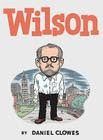The Chronicles of Narnia by C.S. Lewis:
Four young adventurers playing hide-and-seek in the home of an old professor stumble upon an enchanted wardrobe that will take them places they never dreamed. Stepping through the wardrobe door, they are whisked into the spectacular parallel universe known as Narnia--a fairy-tale realm of magical proportions where woodland animals talk and mythological creatures roam the hills. Aided by Narnia's rightful leader, the lion Aslan, the four children will discover their own strength and lead Narnia into a spectacular battle to be free of the White Witch's glacial enslavement forever.
The Lord of the Rings by J.R.R. Tolkien
In anc
A Wrinkle in Time by Madeleine L'Engle
Meg Murry, her brother Charles Wallace, and her mother were in the kitchen for a midnight snack when they found a disturbing stranger. The unearthly stranger told them, "Let me sit down for a moment, and then I'll be on my way. Speaking of ways, by the way, there is such a thing as a tesseract." A tesseract is a wrinkle in time. A Wrinkle in Time is the story of the adventures in space and time of Meg, Charles Wallace, and Calvin O'Keefe. They are in search of Meg's father, a scientist who disappeared while engaged in secret work for the government on the tesseract problem.
The Hunger Games by Suzanne Collins
The future America (now called Panem) is made up of 12 Districts, each District se
The Book of Three by Lloyd Alexander
Set in the mythical land of Prydain, the book draws together the elements of the hero's journey from unformed boy to courageous young man. Taran, an assistant pig keeper, grumbles with frustration at home in the hamlet Caer Dallben; he yearns to go into battle like his hero, Prince Gwydion. Before the story is over, he has met his hero and fought the evil leader who threatens the peace of Prydain: the Horned King.
His Dark Materials Trilogy by Philip Pullman
In the epic trilogy Philip Pullman unlocks the door to worlds parallel to our own. Dæmons and winged creatures live side by side with humans, and a mysterious entity called Dust just might have the power to unite the universes--if it isn't destroyed first.
Beautiful Creatures by Kami Garcia and Margaret Stohl
Ethan Wate is struggling to hide his apathy for his high school "in" crowd in small town Gatlin, South Carolina, until he meets the determinedly "out" Lena Duchannes, the girl of his dreams (literally--she has been in his nightmares for months). What follows is a smart, modern fantasy--a tale of star-crossed lovers and a dark, dangerous secret.
Percy Jackson Series by Rick Riordan
The Lightning Thief Percy Jackson is a good kid, but he can't focus on his schoolwork or control his temper. When his mom tells him the truth about where he came from, she takes him to Camp Half-Blood, a summer camp for demigods. There, Percy learns that the father he never knew is Poseidon, God of the Sea. Soon Percy finds himself caught up in a mystery that could lead to disastrous consequences. Together with his friends--a satyr and other the demigod daughter of Athena--Percy sets out on a quest to reach the gates of the Underworld (located in a recording studio in Hollywood) and prevent a catastrophic war between the gods.
The Lost Years of Merlin T.A. Barron
Young Emrys washes up on a Welsh beach with a woman who claims to be his mother. For years, they share a hovel, but Branwen tells him nothing about his past. One day he discovers that he has some unusual powers; using them to kindle a fire in Branwen's defense, he is blinded by the flames. However, he learns to see without eyes using his "second sight." Desperate to know about his past, Emrys, now 12, sets off on an ocean journey. He lands on Fincayra, where he plunges into a dangerous quest to rescue the island from the destructive blight caused by a pact between its king and an evil power.
Twilight by Stephanie Meyer
Bella Swan's move to Forks, a small, perpetually rainy town in Washington, could have been the most boring move she ever made. But once she meets the mysterious and alluring Edward Cullen, Bella's life takes a thrilling and terrifying turn. Up until now, Edward has managed to keep his vampire identity a secret in the small community he lives in, but now nobody is safe, especially Bella, the person Edward holds most dear.














 J.K. Rowling introduced countless ideas and mythical creatures to the muggle world with her Harry Potter series. For example, Quidditch, the game played on flying broomsticks, is an impossible game that almost every kid hopes to play one day. Now, Quidditch is being played in colleges and high schools across the country, just without flying broomsticks and winged balls. Players run around a field wearing goggles and a cape while holding a broomstick between their legs and shooting balls through mounted hula-hoops. Surprisingly, the game is quite aggressive and many players have the wounds to prove it.
J.K. Rowling introduced countless ideas and mythical creatures to the muggle world with her Harry Potter series. For example, Quidditch, the game played on flying broomsticks, is an impossible game that almost every kid hopes to play one day. Now, Quidditch is being played in colleges and high schools across the country, just without flying broomsticks and winged balls. Players run around a field wearing goggles and a cape while holding a broomstick between their legs and shooting balls through mounted hula-hoops. Surprisingly, the game is quite aggressive and many players have the wounds to prove it.






































